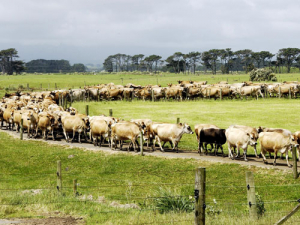Farmer confidence dips slightly, but positivity still dominates
Farmer confidence has taken a slight dip according to the final Rabobank rural confidence survey for the year.
 Rabobank’s latest Global Dairy Quarterly says global prices appear to have peaked in the current cycle.
Rabobank’s latest Global Dairy Quarterly says global prices appear to have peaked in the current cycle.
Rabobank’s latest Global Dairy Quarterly says global prices appear to have peaked in the current cycle.
The report says milk production across the export regions is revving up, and the pace will accelerate in the coming months.
To counter this, rejuvenated import-purchasing from Chinese buyers should prevent the market from being overwhelmed in coming months.
“We are again seeing the export engine produce more milk with higher farmgate milk prices in most export regions the catalyst for a supply-side response,” says Rabobank dairy analyst Emma Higgins.
Based on global commodity price expectations across the remainder of the 2017-18 season, Rabobank forecasts a full- year farmgate milk price of $6.50/kgMS.
Higgins says while the Oceania spring peak looms large, and Australia and New Zealand still remain on-track to increase production, China is expected to absorb much of this increase as an active buyer – at least in the short-term.
“Chinese milk supply has failed to keep up with demand, meaning that Chinese buyers have been increasingly active in recent months,” she says, “and this is a trend that is expected to continue into 2018 – albeit, at a lower rate.”
Higgins says the outlook for commodity markets is for a balanced market to continue in the remainder of 2017.
“We’re not expecting to see much downside pressure on global dairy prices until early 2018, when the Northern Hemisphere ramps up their milk supply.”
NZ dairy export volumes for the three months to July 2017 were 5% higher compared to the prior year. This was a result of milk flows being three per cent higher over the same period and being supported by a return to the market of key buyers in export markets.
On-farm seasonal conditions at present are challenging for most parts of the country and this shows in August 2017 production which is 1.6% down on last year.
Arable growers worried that some weeds in their crops may have developed herbicide resistance can now get the suspected plants tested for free.
Fruit growers and exporters are worried following the discovery of a male Queensland fruit fly in Auckland this week.
Dairy prices have jumped in the overnight Global Dairy Trade (GDT) auction, breaking a five-month negative streak.
Alliance Group chief executive Willie Wiese is leaving the company after three years in the role.
A booklet produced in 2025 by the Rotoiti 15 trust, Department of Conservation and Scion – now part of the Bioeconomy Science Institute – aims to help people identify insect pests and diseases.
A Taranaki farmer and livestock agent who illegally swapped NAIT tags from cows infected with a bovine disease in an attempt to sell the cows has been fined $15,000.
President Donald Trump’s decision to impose tariffs on imports into the US is doing good things for global trade, according…
Seen a giant cheese roll rolling along Southland’s roads?